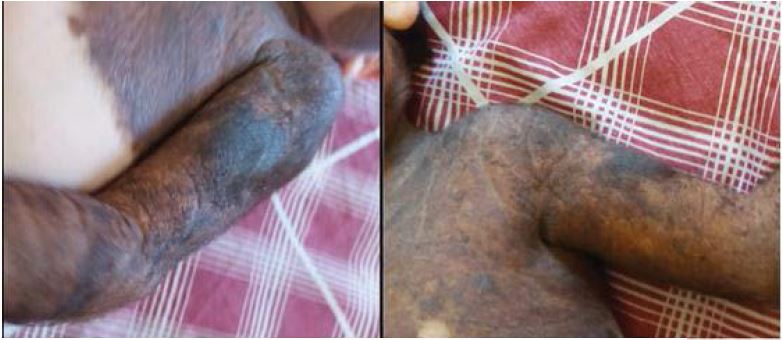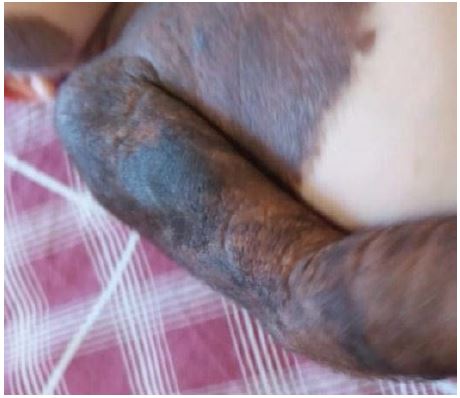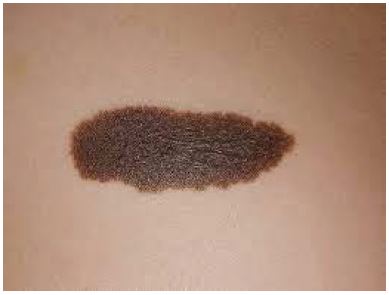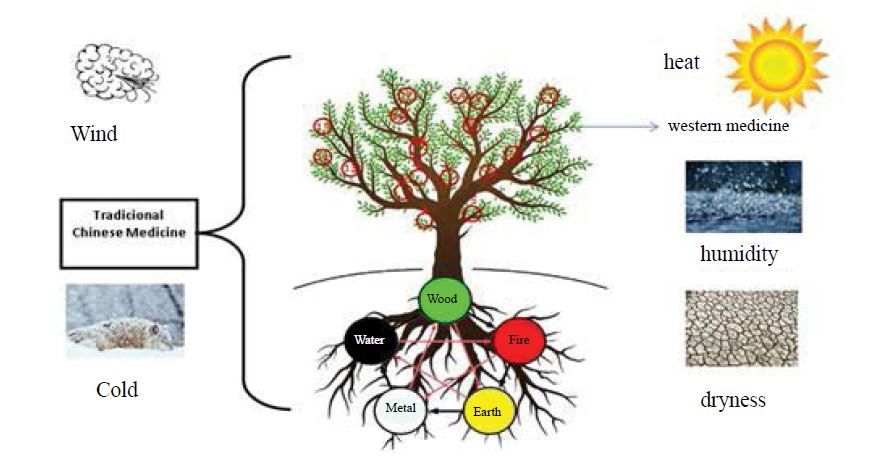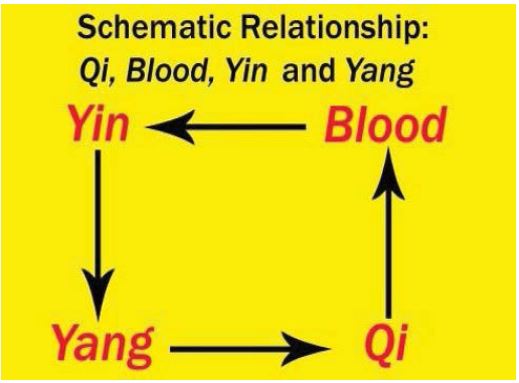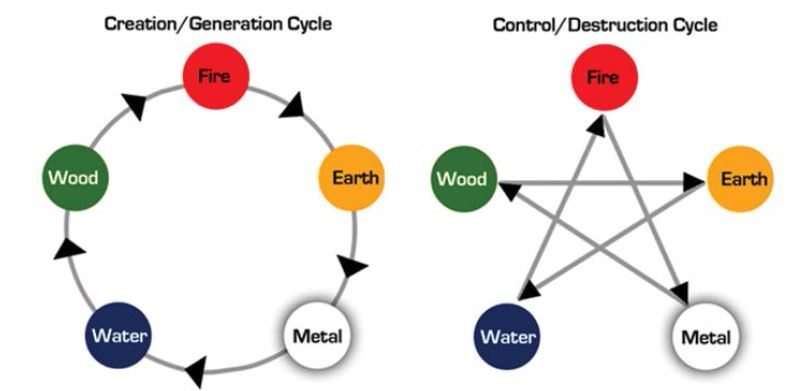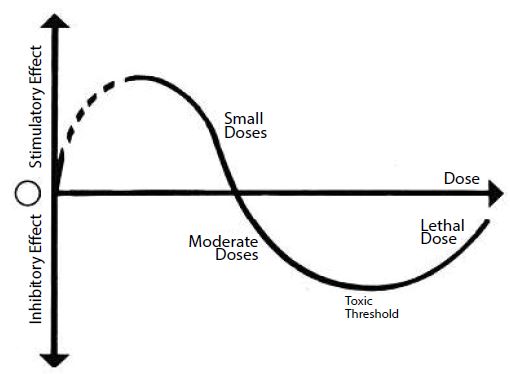Journal Name: Journal of Clinical Case Reports and Trials
Article Type: Research
Received date: 16 September 2019
Accepted date: 01 October 2019
Published date: 05 October 2019
Citation: Huang WL (2019) Is It Possible to Treat Giant Congenital Hairy Melanocytic Nevus Clinically? J Clin Case Rep Trials. Vol: 2, Issu: 2 (06-13).
Copyright: 2019 Huang WL. This is an open-access article distributed under the terms of the Creative Commons Attribution License, which permits unrestricted use, distribution, and reproduction in any medium, provided the original author and source are credited.
Abstract
Introduction: Congenital hairy melanocytic nevus (CHMN) is considered a rare congenital disease, which appears in about 1 / 20,000 births. Giant congenital hairy melanocytic nevus (GCHMN) occurs every 50,000 to 500,000 births. The larger the surface of the impacted body, the rarer the disease. CHMN develops during the first trimester of pregnancy, and the etiology remains unknown. The treatment usually occurs with the use of dermabrasion and phenol peeling, which seeks to remove the first layers of the melanocytic nevus, with aesthetic goals, facilitating the observation of possible melanomas that may appear, common in patients with CHMN. According to Traditional Chinese Medicine, CHMN can be caused by invasion of external pathogens, such as Wind, leading to stagnation of Qi and Blood, blocking the channels and vessels, causing the occurrence of the lesions, or by deficiency of Kidney’s energy.
Purpose:To demonstrate that GCHMN may have clinical treatment and positive responses, avoiding surgical procedures.
Methods: A case report of a 6-month-old male patient diagnosed with GCHMN; different doctors evaluated his condition as untreatable. The surgery was an option, with removal of the affected tissue and transplantation of normal skin tissue, but as the disease was spread all over the body, it was almost impossible. After hearing from another physician with insight into Traditional Chinese and quantum medicine, the patient was treated with acupuncture, received Chinese dietary counselling and quantum medication.
Results: Significant clinical improvement was observed with the treatment, with less pigmentation of the lesions.
Conclusion: There is clinical treatment for GCHMN. For this goal, the physician must have a holistic view of the patient and not focus solely on the injury of the skin itself.
Keywords
Congenital Hairy Melanocytic Nevus, Traditional Chinese Medicine, Quantum Medicine, Diet, Energy.
Abstract
Introduction: Congenital hairy melanocytic nevus (CHMN) is considered a rare congenital disease, which appears in about 1 / 20,000 births. Giant congenital hairy melanocytic nevus (GCHMN) occurs every 50,000 to 500,000 births. The larger the surface of the impacted body, the rarer the disease. CHMN develops during the first trimester of pregnancy, and the etiology remains unknown. The treatment usually occurs with the use of dermabrasion and phenol peeling, which seeks to remove the first layers of the melanocytic nevus, with aesthetic goals, facilitating the observation of possible melanomas that may appear, common in patients with CHMN. According to Traditional Chinese Medicine, CHMN can be caused by invasion of external pathogens, such as Wind, leading to stagnation of Qi and Blood, blocking the channels and vessels, causing the occurrence of the lesions, or by deficiency of Kidney’s energy.
Purpose:To demonstrate that GCHMN may have clinical treatment and positive responses, avoiding surgical procedures.
Methods: A case report of a 6-month-old male patient diagnosed with GCHMN; different doctors evaluated his condition as untreatable. The surgery was an option, with removal of the affected tissue and transplantation of normal skin tissue, but as the disease was spread all over the body, it was almost impossible. After hearing from another physician with insight into Traditional Chinese and quantum medicine, the patient was treated with acupuncture, received Chinese dietary counselling and quantum medication.
Results: Significant clinical improvement was observed with the treatment, with less pigmentation of the lesions.
Conclusion: There is clinical treatment for GCHMN. For this goal, the physician must have a holistic view of the patient and not focus solely on the injury of the skin itself.
Keywords
Congenital Hairy Melanocytic Nevus, Traditional Chinese Medicine, Quantum Medicine, Diet, Energy.
Introduction
The melanocytic nevus is the melanocytic benign proliferation on the skin. In general, they are present since birth, or can appear during childhood, being them named congenital or acquired, respectively [1-6].
The syndrome is very rare and appears in about 1 to 6% of newborns worldwide. The majority, however, are small Congenital Melanocytic Nevus, level 1 or 2. The prevalence in the cases of giant congenital melanocytic nevus is extremely rare, appearing in around 1 to every 20.000 to 1 to every 500.000 newborns. During adolescence and childhood, the nevus can increase significantly, or stop evolving. The presence of the nevus in big number demonstrates a tendency to the development of melanomas, and the risk factor increases proportionally to the quantity of parts affected by the disease [1-6].
In previous researches, genetic features such as eye and hair colors seemed to influence, the prevalence and appearance of CHMN. Environmental factors, such as the exposition to ultraviolet radiation and sunburns seem to have some relation with the disease also [6].
Referring to the treatment, in the cases where the CHMN is small, level 1 or 2, in general it is possible to use phenol peeling or a procedure known as dermabrasion [6].
The dermabrasion has the goal to plane the skin, softening the irregularities in the skin, present in many of the patients with CHMN [8-9]. In general, the main goal of the dermabrasion procedure is to take out the nevus completely, once the nevus takes two of the three layers of the skin. Their total removal is not always possible, but taking out the first layer can make the observation of possible melanomas and other tumors easier. [8] The phenol peeling has the same goals [9].
Even with the possible treatments, in general, doctors comprehend GCHMN as a incurable and not treatable pathology. As they do not create pain in the patients’ who carry them, and appear very rarely, this is the Western Medicine standard position regarding the subject [1-6].
The idea that the disease is uncurable appears in the case report of this study, considering the mother of the child being studied, consulted her son in several doctors, of varied specialties, searching for a treatment to the pathology. The answer the mother received was the same: nothing could be done.
It is exactly where Western Medicine does not provide a treatment where patients will search support in other traditions and different medical perspectives. This study will analyze the treatment available in Western Medicine, as well as the propositions for treatment and comprehension of the pathology for Traditional Chinese Medicine, Hippocratic Medicine and other traditions, with the main purposes of comprehending the disease in a perspective where it can be treated.
The proposal of treatment and diagnosis used in this case report was based on the treatment of one specific patient of the author in 2007, who had pain in the legs and glaucoma. The treatment aims to analyze the energy alterations and their influence on the health of the body, and was previously published in the article “Is it Possible to Treat Community- Acquired and Nosocomial Infections with the Same Method, Without the Use of Antibiotics?” published by the Journal of Applied Microbiological Research of Innovation Info Journal, in June of 2019.
Purpose
The main purpose of this study is to comprehend GCHMN through a new perspective, as well as demonstrate the effectiveness of the use of Traditional Chinese Medicine tools to improve significantly the condition.
It is also a goal to demonstrate that it is possible to diminish color and the number of GCHMN lesions clinically, without the use of surgical procedures.
It is also a goal to comprehend the patient as a whole not looking to the patient only through the disease perspectives, being then able to acknowledge energy imbalances that may have influenced the formation of the disease and its maintenance.
Methods
The metholdogy of this study was based in the analysis of different pubmed articles found regarding the subject of GCHMN and CHMN, comprehending the current treatments in Western and ancient medical perspectives.
For illustration purposes, a case report was also used. The case report is from a boy, six-months-old, bearer of GCHMN, submitted to treatment with acupuncture and Chinese dietary counselling, according to the understanding of Traditional Chinese Medicine and Quantum Medicine.
Case Report
Baby boy, six months years old, bearer of giant congenital melanocytic nevus. The first contact between the mother of the baby and the doctor happened by accident. The mother of the patient was with her baby, scheduling an appointment for a third person.
The doctor observed the lesion, and talked briefly to the patient’s mother, asking her to schedule an appointment for her son.
A week later, in the first consultation, the doctor observed the skin of the patient. He had black patches among all his body. He was identified as bearer of GCHMN as soon as he was born. According to the previous diagnoses, the only possible treatment would be dermabrasion or skin transplant.
In parallel, the background of the mom was also questioned, as in Traditional Chinese Medicine diagnoses, many times the disturbances in the mom can reflect on the baby. The mom had been suffering from post-partum depression. Five months before the conception of the boy with nevus, she suffered a miscarriage.
At first, the GCHMN was seen by the doctor as being connected to an energy deficiency, related to the Blood energy. The first indications of the TCM specialist was to change the baby’s diet, to increase the absorption of nutrients and start normalizing the health levels of energy, once they would improve Blood production and consequently, influence positively the skin of the patient.
According to TCM, Blood deficiency has a general symptom, which is related to constipation, the difficulty of evacuating every day. The patient had constipation, evacuating once every two days, and had dry feces, small and round.
The kid was not breastfed, and the nourishment was limited to three main sources: powdered milk, based on cow’s milk, fruits, baby food, mainly constituted by vegetables and water in room temperature.
Figure 1:Before and After Treatment
Figure 2:Congenital Melanocytic Nevus (diameter superior to 20 cm, satellite lesions included). Picture of the patient in the case report before beginning of the treatment.
The first orientation was to change the milk to goat’s milk, avoid raw fruits, with exception of papaya, apple and lemon. The water also has to be boiled, and always offered lukewarm to the baby.
The patient was also submitted to auricular acupuncture sessions, once or twice a week, with mustard seeds, with the main goal of rebalancing Yin, Yang, Qi and Blood energy, specially fortifying the Blood energy, to treat the systemic imbalance of the patient, responsible for the symptoms.
Besides the dietetic recommendations and auricular acupuncture, the doctor prescribed two quantum medications, gel, with the name of Diathesis II and Anemone, for being applied directly on the skin. Diathesis II in any parts of the body, one-drop, two times a day, and Anemone also one drop, in the left hypochondrium, to increase blood production, also twice a day (Figure 1).
Results
On the second session to change the acupuncture points on the baby’s ear, the mom appeared happier, because the diet changes, acupuncture sessions, and quantum medication diminished the color of the lesions.
There was also an alteration in the frequency of evacuations of the baby, that passed to be daily, as well as the feces started to appear softer. According to Traditional Chinese Medicine, this would mean an improvement in the Blood energy production.
In the following sessions, the color of the lesions keeps diminishing, and this is still happening. The self-esteem of the mother also improved, once she started believing in the possibility of the clinical treatment that did not required complicated resources or surgery.
The patient is still receiving orientations, and despite not have improved completely, obtaining significant improvement with the treatment.
Discussion
Classification and Size
According to Western Medicine, congenital melanocytic nevus is classified and categorized according to the size of the lesion in relation to the growth of the kid. Despite the conflicting opinions found in literature [1-3], in general the calculations are done to the maximum size expected when the patient achieve adulthood [17-19].
The correct classification more accepted is the one stated by the University of New York. This classification divides the bearers of CHMN in three groups.
Small ≤ 1,5 cm, medium
Intermediary = 1,5 – 19,9 cm (Figure 1),
Big or Giant ≥ 20 cm.
The calculation is based on the proportion of growth of the cephalic area and of the rest of the body during life. In this way, it is possible to comprehend the size the NMC would be during his adult life. During life, the cephalic are increases 2,8 times. The arms and the upper body will grow 8 times, and the legs 12. Therefore, a newborn bearer of CHMN presents nevus with diameter around or superior to 6cm in the legs, 7 cm in the upper body and 12 cm on the face and head, the size of the nevus will pass the 20 cm, as demonstrated in figure 2 and 3 [1-3].
Figure 3:Small Congenital Melanocytic Nevus (diameter inferior to 1,5 cm)
Western Medicine literature also uses the concepts of satellite lesions. These lesions would be those who are very close to other lesions, and may connect to the other lesions within time. In order to diagnose if the patient is portable of GCHMN, it is also important to consider the anatomic localization of the lesions, the diversity of color in the lesions, roughness, and presence of dermal nodules [17-19] (Figure 2 and 3).
Therefore, the kid in the study is considered bearer of GCHMN [1-6], according to the method described by several articles regarding the condition, in the Western Medicine standard definitions.
Risk Factors and Associated Diseases
The bearers of giant nevus are more vulnerable to developing melanomas [1-6].
The involvement of the nervous system in the nevus is also a concern for the bearers of GCHMN. The pathology is asymptomatic in the majority of the cases, and in general, the diseases progresses to the nervous system in 7% of the cases, for those who have GCHMN, in 5 to 10 years [6].
When the nervous system is involved, different symptoms such as seizures, manifestation of increase in the intracranial pressure can also appear [6,18,20].
The diameter of the lesions is associated to the risk of developing melanoma. In general, in barriers of CHMN level 1 or 2, the risk of developing melanoma is around 0,7%, increasing to 2,5% for those with Giant Congenital Melanocytic Nevus. The risk seems to continue growing with the increase of the compromised area. In general, the melanomas appear before puberty, and for those with small or medium nevus, they may appear later [1-9,18,20].
However, few patients have problems related to their nervous central system, and in the majority of the cases, the lesions are present through life, not necessarily being associated with other congenital or acquired disease [1-6].
Standard Treatment
The conventional treatment or excision and its impact regarding the diminution of melanomas development is still controversial. [21-22] In previous studies, such as the one entitled “Nevos Melanocíticos Congênitos Na Infância”, from Tais Grazziotin [21] already questioned if the reduction of melanoma justifies the recommendations of surgery, as the surgery has risks. However, the surgery still seems to present potential benefit in his psychological and aesthetic spheres, one of the main factors linked to the search for it [1-4].
Small and not spread CHMN’s can be easily removed; once again, the relation is inversely proportional to the size of the nevus and their localization. When the nevus is positioned in a big part of the upper body or cephalic area, it starts to be very different to perform surgery [1-4].
The surgery has to be realized between the first and second year of life, when the skin presents more mobility. However, the surgery may not be recommended several times during healing or irregular re-pigmentation that may influence the esthetic result. Many of the times, the gradual lightening of the lesion starts to happen in the first decade of life, especially for the bearers with light skin [1-4].
There are other modalities of surgical treatment, searching to remove the superficial component of the nevus, with dermabrasion and laser procedures. These procedures do not diminish the risk of developing melanoma in the deep structures of the skin. The laser therapy is usually used by those who have small and medium nevus [21].
Traditional Chinese Medicine: The main differences between the two approaches
The representation of a tree creates a parallel on how diseases are treated today from the point of view of Western medicine and according to Traditional Chinese Medicine. In other articles, the author stated the importance of this metaphor, in order to address how Western and Ancient perspectives could work together [10-16].
TCM explains the functioning of the human body through a holistic view. Therefore, external factors such as wind, cold, the heat, dryness, humidity, diet and internal factors such as emotions may have an influence in the wellbeing [10-16].
The tree present in Figure 4 has a trunk with several branches. Each branch represents each medical specialty and each leaf that comes out of each branch represents the symptoms and diseases of each specialty. This visible part is the object of study and practice in the western medical profession because of the curriculum offered in the medical schools around the world. The focus is to treat each leaf in each specialty [10-16].
The part of the tree that is below the earth - invisible to the naked eye - are the roots of the tree. This part remains unknown to Western medicine mainly because its existence is not recognized or discussed in the medical faculties [10- 16 (Figure 4).
Traditional Chinese Medicine and Hippocratic Medicine have similarities. Hippocrates is considered the father of medicine. The physician was born in 460 a. c., and through all his life, dedicated to the studies of healing. His studies shown the individual holistically and the treatments were characterized by the application of positive energy inducement in its three features: energy, mental and emotional [10-16].
Figure 4:Schematic Relationship between Traditional Chinese Medicine and Western Medicine
Figure 5:Schematic Relationship: Qi, Blood, Yin and Yang.
His model of medicine dedicates to the integral healing of the patient, using completely different methods and techniques of Galenic Medicine [10-16].
In Traditional Chinese Medicine, everything in the universe is made of energy, including the human being. Energy is similar to electricity, and this energy, which constitutes everything in the world, receive during life, a range of perturbations, initiating in emotional issues, and them, the external factors, which are Wind, Cold, Heat and Humidity [9].
A diagnostic perception, based on an energy would aim to identify the person’s energy, mental and emotional imbalances. The doctor’s function is to listen to the complaints, question about sensations and subtle symptoms, considering the reports of the patient better than physical and electromagnetic exams [10-16].
According to Traditional Chinese Medicine any symptom of physical, emotional or psychological illness is caused by the imbalance of what is referred to as the internal energies or Qi in Chinese.
The term energy in Chinese medicine or Qi is characterized as the image of steam rising from a pot of rice cooking on the stove. That steam represents Qi. Qi is also called life energy, life force, prana, and bio-energy as well as many other names. This energy has been known to every culture in almost all parts of the world. Some of them explored it and some did not. Those who did discovered a completely new world [9].
Yin, Yang, Qi and Blood
In the body, the Yin and Yang are responsible for all the health process. The two energies are connected to the organs, and they would create symptoms when facing perturbations and imbalances. The functioning of the body is ruled by the flow of energy features: Yin, Yang, Qi, and Blood, Figure 5. [10-16]
Qi and Blood nourish the body; Qi moves the Blood; Blood is the mother of Qi [26].
This study was presented by the author, in 2015 at the Acupuncture Research Conference at Harvard Medical School, in Boston, USA. The summary of this study states the following [27]; Treating all energy imbalances, we would treat all symptoms, at the same time. It would not be necessary to recognize the disease or symptom. The physician part would be to identify the imbalance and treat it, and with the energy balance restored, all symptoms would disappear consequently. Considering this this type of reasoning, we would treat all diseases of all specialties at the same time, treating the root of the problems and not only the symptoms [13].
Five Elements Theory
The second main theory basing Traditional Chinese Medicine is the Five Elements Theory.
Figure 6:Five Elements Theory.
The Five Elements Theory states that there are five elements present in everything in the world, including our bodies. These elements are Water, Wood, Fire, Earth and Metal.
Inside our bodies, these elements will be represented by specific organs. These organs are considered the massive organs, and they have extreme important parts in the wellfunctioning of the body [10-16].
The Wood element corresponds to the Liver, the Fire element corresponds to the Heart, the Earth element corresponds to the Spleen, the Metal element corresponds to the Lungs, and the Water element corresponds to the Kidney, as represented in Figure 6.
The skin has a different connection with all the Five Elements and the related organs. It is connected with all the functions of the body, which will somehow alter the state of health of the skin. Skin problems, as the example of GCHMN are a reflex of an energy imbalance, as the skin is the first line of the defense to the body [29].
In the specific case of the patient described in the clinical case, the treatment was based on the theory of the Five Elements; there the compromised organ would be the Spleen, due to a deficiency in the Spleen Pancreas meridian, leading to a malabsorption of nutrients and therefore, a deficiency in the formation of Blood [10-16]. The author developed a study entitled “Constitutional Homeopathy of the Five Elements based on Traditional Chinese Medicine” analyzing and developing a novel treatment with homeopathy.
This condition would consequently lead to a deficiency in the other meridians, because it is through Blood that the nourishment of these meridians and organs is done. Because of this reason, Anemone quantum medication was used, with an energy provided by the Spleen [10-16].
Relationship between Pregnancy and Congenital Diseases in Traditional Chinese Medicine
In this specific case, the patient was presenting a deficiency in the energy of the Spleen-Pancreas dues to the chronic ingestion of dairy products, cold water and raw baby food. The energy of the Spleen-Pancreas is responsible for the absorption of nutrients and in the formation of Blood energy. As they were not working properly, not all the food consumed by the patient was being absorbed correctly [24-25].
Besides, the patient probably had a pre existent condition of Blood deficiency, passed from his mother inside the uterus. The conclusion appeared observing the historic of the mother, who had had a previous abortion, in the first trimester, before getting pregnant. For Traditional Chinese Medicine, miscarriages in the first trimester are usually linked to Blood deficiency [23-26].
The recommendations of Traditional Chinese Medicine after a miscarriage, is to consider the loss of energy similar or worse than a normal birth. The process of a miscarriage spends the same amount of energy than the birth, added to the emotional distress usually associated with the situation [25].
According to Traditional Chinese Medicine, is also primordial that the women wait around two years to initiate a new pregnancy [24]. The mother of the patient described, got pregnant five months after the miscarriage episode, this being an indirect data that may denote that the mother was already a bearer of the Blood deficiency and other energy disturbances.
In this way, the development of the baby was originated from a mother already energy deficient, what may have influenced the congenital condition of the baby.
According to TCM, a baby is formed from 50% maternal energy and 50% father’s energy, however, the father was not able to have his energy evaluated in the study.
Arndt-Schultz’s Law
The Arndt-Schulz’s law, originally formulated in 1888, states the effects of different drug concentrations on an individual basis, Figure 7. The rule states that for all substances, small doses stimulate, moderate doses inhibit and overdoses kill [10-16].
According to this law, highly diluted drugs improve organic processes, while high concentrations harm health. In the case of prescription drugs with high concentrations.
Figure 7:Arndt-Schultz Law.
The choice of quantum medication was based on the idea of not generating more energy deficiency, and fortifying the energy of the patient that was already low.
Quantum Medications
Quantum Medication (QM) develops a methodology that addresses the pathologies from the point of view of biophysics and not only biochemistry. It introduces new fundamental concepts, concerning life and its maintenance, attributing to the diseases an archetypal and genetic basis. The organisms know how and what they can get sick because they have inserted pathognomonic stereotypes [31].
Traditional Chinese Medicine is in essence a systemic medicine, which, as the name says, means organisms as a system, in which their organic and structural components must behave in balance so that the whole is also harmonious [31].
The QM is based on a complete and definitive theory: quantum theory or quantum mechanics. Such a foundation lends QM “status” of medical medicine, this attribute, relating to Sciences, which incorporate Mathematics, and the analytical method. QM seeks to understand the balance of the cell and the harmony of the elements and substances found in these cells [31].
Functionally, QM seeks to act in a “physical” way within the body, hindering and hindering the development of a fertile biological terrain to the installation of degenerative processes [31].
Two quantum drugs were used in this patient. The first, Diathesis II, was used to treat the field. Since the patient is a baby with an energy deficiency, and therefore less active, this medicine has been chosen to treat the field [31].
The second medicine chosen was the Anemone, in order to help increase the production of Blood by the spleen. Both drugs were indicated on gel, the first one (Diathesis II) one drop in the upper limb, twice a day and the second (Anemone), one drop, twice a day in the left hypochondrium, in the place corresponding to the spleen [31].
Conclusion
The conclusion of this study is that is a clinical treatment for patients’ barriers of Congenital Melanocytic Giant Nevus. To achieve this goal, it is necessary to not look only to the symptoms in the skin, but comprehend that the symptom is only a consequence of an energy imbalance, in this specific case, the deficiency of Blood at the root level. To treat properly it is possible to integrate the teachings of ancient medical traditions with the teaching of Western Medicine, in the same way of an Yin and Yang metaphor, presented in previous studies of the author.
Integrate the teachings of Traditional Chinese Medicine, Hippocratic and Quantum Medicine to what we already have is an important step to obtain success in the treatment of different pathologies, in this case, GCHMN.
Viana AC, Gontijo B, Bittencourt FV (2013). Giant congenital melanocytic nevus. n Bras Dermatol 88: 863-878. [ Ref ]
Girish Gulab Meshram, Neeraj Kaur, Kanwaljeet Singh Hura (2018) Giant Congenital Melanocytic Nevi: An Update and Emerging Therapies. Case Rep Dermatol 10: 24-28. [ Ref ]
Vykuntaraju K Gowda, Anita Basude, Sahana M. Srinivas, Maya Bhat (2016) Giant melanocytic nevi with neurocutaneous melanosis masquerading as neurofibromas. J Pediatr Neurosci 11: 258-260. [ Ref ]
Belysheva TS, Vishnevskaya YV, Nasedkina TV1,, Emelyanova MA, Abramov IS et al (2019). Melanoma arising in a Giant congenital melanocytic nevus: two case reports. Diagn Pathol 14: 21. [ Ref ]
Lais de Abreu Mutti, Marta Regina Machado Mascarenhas, João Marcos Goes de Paiva, Ronaldo Golcman, Mauro Yoshiaki Enokihara, et al. (2017) Giant congenital melanocytic nevi: 40 years of experience with the serial excision technique. An Bras Dermatol 92: 256-259. [ Ref ]
Tchernev G, Lozev I, Pidakev I, Lotti T, Wollina U, et al. (2017) Giant Congenital Melanocytic Nevus (GCMN) - A New Hope for Targeted Therapy?. Open Access Maced J Med Sci 5: 549-550. [ Ref ]
Gold MH (2013) Dermabrasion in dermatology. Am J Clin Dermatol 4: 467-471. [ Ref ]
Rompel R, Möser M, Petres J (1997) Dermabrasion of congenital nevocellular nevi: experience in 215 patients. Dermatology 194: 261- 267. [ Ref ]
Hopkins JD, Smith AW, Jackson IT (2000) Adjunctive treatment of congenital pigmented nevi with phenol chemical peel. Plast Reconstr Surg 105: 1-11. [ Ref ]
Huang Wei Ling (2018) Can Recurrent Furunculosis be Treated without the Use of Antibiotics?”. Acta Scientific Microbiology 1: 04-12. [ Ref ]
Huang Wei Ling (2018) “Could Postsurgical Nosocomial Cellulitis be Treated without the Use of Antibiotics?”. Acta Scientific Microbiology 1. [ Ref ]
Huang WL (2018) Can Hospital Osteomyelitis Be Treated Without the Use of Antibiotics? Int J Microbiol Infect Dis. 2: 1-6. [ Ref ]
Huang Wei Ling (2018) “Why do Patients Still Catch Hospital Infections Despite the Practice of Infection Prevention and Control Programs?”. Acta Scientific Microbiology 1: 34-43. [ Ref ]
Ling HW (2019) Can We Treat Atopic Dermatitis without using Corticosteroids? J Pediat Infants. 2: 8-19. [ Ref ]
Huang WL (2019) Treatment for Smoking Addiction without the Use of Any Medication. J Pul Med Respi Ther. 18-27. [ Ref ]
Huang WL (2018) The Treatment of Asthma Based on Traditional Chinese Medicine and Homeopathy. J Pediat Infants.1: 24-30. [ Ref ]
VA Kinsler P, O’Hare N, Bulstrode JE. Calonje WK, Chong D, Hargrave, et al. (2017) Melanoma in congenital melanocytic naevi. Br J Dermatol. 176: 1131-1143. [ Ref ]
Tatiana S Belysheva, Yana V Vishnevskaya, Tatiana V Nasedkina, Marina A Emelyanova, Ivan S Abramov, et al. (2019) Melanoma arising in a Giant congenital melanocytic nevus: two case reports. Diagn Pathol. 14: 21. [ Ref ]
V Kinsler, S Aylett, S Coley, W Chong, D Atherton (2001) Central nervous system imaging and congenital melanocytic naevi. Arch Dis Child. 84: 152-155. [ Ref ]
Thais Grazziotin. Nevos melanocíticos congênitos na infância. 2238- 0450/13/02-02/59 Copyright © by Sociedade de Pediatria do Rio Grande do Sul [ Ref ]
Francisco Macedo Paschoal. Nevo melanocítico congênito Educação Médica Continuada / Continuing Medical Education. An bras Dermatol, Rio de Janeiro, 77(6):649-656, nov./dez. 2002. [ Ref ]
Lu Li, Ping Chung Leung, Tony Kwok Hung Chung, Chi Chiu Wang (2014) Systematic Review of Chinese Medicine for Miscarriage during Early Pregnancy. Evid Based Complement Alternat Med. 2014: 753856. [ Ref ]
Zheng J (2013) About da tai - abortion in old Chinese folk medicine handwritten manuscripts. Sudhoffs Arch. 97: 102-120. [ Ref ]
Lee Hullender Rubin, DAOM, Dara Cantor, BS, and Benjamin L. Marx. Recurrent Pregnancy Loss and Traditional Chinese Medicine. [ Ref ]
QiaoYu Jiang, Jue Li, Guang Hua Wang, Jing Wang (2016) The Relationship between Constitution of Traditional Chinese Medicine in the First Trimester and Pregnancy Symptoms: A Longitudinal Observational Study. Evid Based Complement Alternat Med. 2016: 3901485. [ Ref ]
OuYang B, Gu Z (1996) Essentials of Traditional Chinese Medicine. Shandong, Science and Technology Press. [ Ref ]
HUANG L (2005) Auricular Medicine – The new Era of Medicine and Healing. First Edition. [ Ref ]
SIMMONS R (2005) The book of Stones, North Atlantic Book. [ Ref ]
Baroni A, Ruocco E, Russo T, Piccolo V, Geng L (2015) The use of traditional Chinese medicine in some dermatologic diseases: Part I-- Acne, psoriasis, and atopic dermatitis. Skinmed. 13: 32-38. [ Ref ]
Elizabeth Craik, Hippocratic Corpus. 2012. [ Ref ]
MATTOS, V. Medicina Quântica. 2º Edição, 2010. ISBN: 85-85844-63-9. Publicação Independente. [ Ref ]
